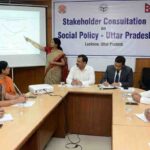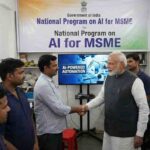Lucknow, 2025 — Uttar Pradesh (UP), with its complex socio-political fabric and vast electorate, serves as a proving ground for diverse political campaign strategies. What works in UP often becomes a blueprint for other regions in India, given the state’s status as a political bellwether. This article delves into effective campaign strategies that have resonated in UP, examining key approaches that have swayed voters and influenced elections in this critical state.
Localized Campaigning: Tailoring Messages to Diverse Audiences
- Micro-Targeting Based on Demographics
- Strategy Insight: Successful campaigns in UP often use micro-targeting to cater to the specific cultural, caste, and economic backgrounds of different voter segments.
- Implementation: Using data analytics to understand voter preferences in different districts, parties can tailor their messages on platforms ranging from social media to door-to-door campaigns.
- Regional Language Content
- Communication Key: Utilizing regional languages and dialects like Awadhi, Bhojpuri, and Braj in campaign materials ensures a deeper connection with the local populace.
- Impact: This approach not only enhances engagement but also builds trust by showing respect for local cultures and traditions.
Engagement Through Developmental Promises
- Infrastructure and Welfare Schemes
- Voter Appeal: Promises of improved infrastructure, such as roads, electricity, and water supply, alongside welfare schemes like healthcare benefits and agricultural support, are particularly effective.
- Case Studies: Projects like the Purvanchal Expressway have been highlighted in campaigns to demonstrate commitment to regional development.
- Education and Employment Initiatives
- Youth Focus: Addressing unemployment and enhancing educational facilities are critical issues that resonate with UP’s significant young population.
- Strategy Examples: Announcing new universities, skill development programs, and job fairs as part of campaign promises.
Utilizing Digital Platforms and Social Media
- Digital Outreach
- Modern Campaigning: With a burgeoning number of internet users, digital campaigns via social media platforms, WhatsApp, and YouTube are increasingly crucial in reaching a wider audience.
- Effectiveness: Digital campaigning allows for rapid dissemination of information and real-time interaction with voters, providing a platform for both broad and niche messaging.
- Influencer Partnerships
- Celebrity and Influencer Endorsements: Leveraging popular figures from cinema, sports, and regional influencers who resonate with the local populace to amplify campaign messages.
- Engagement Strategy: These influencers can sway public opinion and increase voter turnout, particularly among the youth.
Grassroots Mobilization and Voter Contact Programs
- Door-to-Door Campaigning
- Personal Touch: Direct interaction with voters remains one of the most effective strategies in UP’s densely populated regions.
- Community Meetings: Organizing small gatherings or sabhas where candidates can directly address community concerns and showcase their commitment.
- Rallying Support Through Local Leaders
- Local Influencers: Utilizing respected local figures such as village heads, community leaders, and social activists to advocate for the party can significantly boost credibility.
- Trust Building: These local endorsements can be pivotal, as trust in community leaders is typically high.
Navigating Caste and Religion Dynamics
- Caste Alliances and Outreach
- Sensitive Navigation: Forming and maintaining caste-based alliances and addressing the specific needs and concerns of different caste groups through targeted campaigning.
- Inclusivity: Ensuring that the campaign rhetoric includes messages of social harmony and inclusivity to appeal to a broader electorate.
- Religious Sentiments
- Cultural Competence: Respecting religious sentiments and participating in local religious events can enhance a candidate’s image as culturally aligned with the community.
- Balanced Approach: It’s crucial to handle religious issues sensitively to avoid alienating any section of the diverse religious landscape.
Conclusion: A Diverse Strategy Portfolio
Campaign strategies in UP require a blend of traditional grassroots engagement and modern digital tactics, tailored to the state’s unique demographic and cultural landscape. The effectiveness of these strategies lies in their execution and the ability to resonate with the varied aspirations of UP’s electorate. As political dynamics evolve, so too will the strategies needed to engage and persuade UP’s voters.














